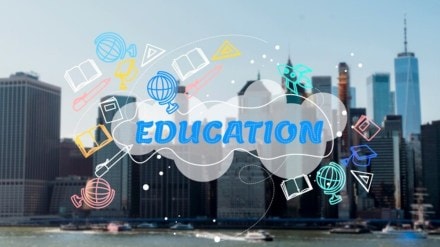By Dhaval Mehta and Elizabeth Moje
Education acts as a crucial platform to raise well-informed, dynamic, and multi-talented individuals who act as drivers of social and economic change. With increased focus on education, educators across the globe are working on different approaches to boost student engagement, enjoying varying degrees of success. In the strive for academic excellence, technology is proving to be the biggest asset. Educational apps, virtual labs, online discussion platforms, multimedia presentations, and other digital tools and devices are providing omnichannel academic exposure, making learning more interactive and effective. With classrooms still remaining the primary channel of knowledge acquisition, educators are benefitting from introducing multidisciplinary and interdisciplinary methodologies for faster learning and improved quality of education.
Local frameworks of education have consistently provided a dependable base for learning, making Indians shine at different platforms and head a number of global organisations. Yet, the Indian education system can benefit from improvement, including changing its approach from theory-based learning to practical-based learning. While embracing local established frameworks, academic leaders can also introduce international frameworks to enjoy better results. With a target on active learning, they must venture beyond traditional lectures and boost collaborative, hands-on activities, including peer teaching, role-playing case studies, and group discussions.
Techniques like problem-based learning (PBL) provides superior knowledge retention and enhances critical appraisal, brainstorming, structuring, and hypothesis by exposure to open-ended problems. This student-based pedagogy encourages students to learn in a team environment through personally meaningful projects involving collaborations, problem-solving, and critical thinking. They learn to approach real-world problems with multiple perceptions and deal with them collaboratively using the most suitable solutions.
Further, educators are realising that classroom time should be reserved only for subject-related discussions, skill-building practices, and application of knowledge in practical format. The Flipped Classroom Model provides them the framework for this inverted traditional teaching method, where all instructional contents are delivered outside the classroom, allowing the classroom time for exploration and practice of knowledge. It motivates students to do their reading and assignments at home so that they can apply concepts to solve problems in class.
Many international academic institutions are also practising Outcome-Based Education (OBE) to design academic activities with desired learning goals and more Indian schools should adopt it for better results. Through the OBE they could establish a set framework defining what knowledge students must gain, what they should understand, and what they should be able to do by the end of the program. Hence, it provides a roadmap to assist in each children’s learning.
Another framework which is picking up in the West and would benefit the Indian students is Personalised Learning. It is based on the belief that every individual is different and has unique learning needs and requirements. Hence, in place of one-curriculum-for-all, students could benefit from personalised learning, where the curriculum will be tailored as per their preference, pace, and needs. Personalised learning plan along with adaptive learning platforms can serve diverse learning styles and create holistic individuals with different talents and capabilities.
The classroom experience can further be supplemented through community engagement by fostering collaboration between academic institutions and local communities. A student is a future asset to the whole community and it is the responsibility of everyone to nurture and shape them. Hence, schools should reach out to community organisations, local businesses, and parents to build a supportive learning environment.
International exchange and partnerships allow students to move beyond the local communities and become a world citizen, viewing the world and its different cultures with new eyes. The exposure to new cultures develops their thinking and enhances their global awareness and collaboration skills. It also helps in eliminating any prejudices and make them more empathic people, while boosting their communication and social skills.
While international exchange opens a window to view the different cultures of the world and listen to their problems and solutions, integrating cross-cultural elements into the curricula allows students to navigate the pressing global issues and broaden their understanding of the world. The international case studies bring awareness to unique problems faced by different communities and companies and the tools and techniques they used to solve them. It increases their perception to view the relationship between people, context, and phenomena and promotes innovative thinking.
Another way to improve instruction and engagement is to conduct Instructional Rounds (IR) where educators work together. The practice combines three common elements of improvement: classroom observation, an improvement strategy, and a network of educators. Rounds are about understanding what’s happening in classrooms, how we as a system produce those effects, and how we can move closer to producing the learning we want to see.
Lastly, a regular assessment of learning helps the educators to track their students’ progress, allowing them to provide constructive feedback and take corrective actions to guide improvement. Hence, along with summative assessments, the use of formative assessment proved beneficial in monitoring student progress.
The author is CEO of Globestar Edutech Pvt Ltd and dean of UM-Marsal Family School of Education. Views are personal.
